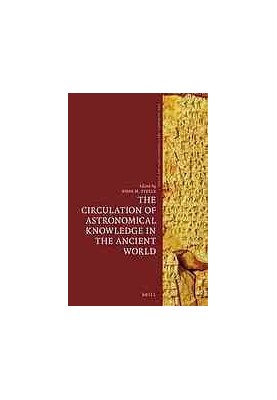The circulation of astronomical knowledge in the ancient world
 Instant download
Instant download
after payment (24/7)
 Wide range of formats
Wide range of formats
(for all gadgets)
 Full book
Full book
(including for Apple and Android)
Astronomical and astrological knowledge circulated in many ways in the ancientworld: in the form of written texts and through oral communication,and by the conscious assimilation of sought-after knowledge and the unconsciousabsorption of ideas to which scholars were exposed. The circulationof knowledge happened both between cultures, for example the transmissionof astronomical texts, theories or parameters from one culture to another,and within cultures, both spatially, for example, between scholars in differentcities, between “elite” and “popular” astronomical traditions, and between differentgenres of scholarship, and temporally, for example later interpretationsof and reaction to earlier works. I use the term “circulation” deliberately here toemphasize that the transmission of knowledge is not a unidirectional process:astronomical knowledge from one group is not imposed upon another group;rather the process is one of negotiation between the two parties. Furthermore,the act of receiving knowledge almost always involves a process of adaptationof that knowledge to make it relevant to and compatible with the existing scholarlypractices of the recipients.1As discussed by Rochberg, pioneering work on the transmission of astronomicalknowledge between cultures was undertaken by members of BrownUniversity’s Department of History of Mathematics during the second half ofthe twentieth and the first few years of the twenty-first centuries. Throughthe work of Otto Neugebauer, Gerald Toomer, David Pingree, and others it hasbecome evident how much astronomical knowledge was transmitted betweenMesopotamia, Greece, India, the medieval Islamic World, and medieval andRenaissance Europe. As recognized by Neugebauer, a particularly good markerof transmission are precise numerical parameters used within mathematicalastronomy.2 The transmission of broader astronomical or astrological conceptsand methods can also be traced between cultures, but the evidence for transmissionis not always so clear cut and we must be wary of assuming transmissionwhere there are merely similarities in the tradition.3 When dealingwith celestial omens, for example, how similar must omens be to allow us toconclude that they have been transmitted from one culture to another? In orderto answer this methodological question it is necessary to consider things suchas wider historical evidence for contact between the two cultures and possibleroutes of transmission, the number of “similar” cases (a few similar omens maysimply be coincidence, a large number, especially if they share other featuressuch as order within a text, making transmission more likely), and whether thesimilarities are unique to the cultures in question or whether similar materialexists from cultures where it is clear that there can have been no contact. Thepapers by Rutz, looking at the transmission of Mesopotamian astral knowledgeto other parts of the near east in the late second millennium bc, Misiewicz, consideringthe transmission of Mesopotamian lunar omens through the Greektradition into late antiquity, Montelle, examining the transmission of Babylonianschemes for the rising times of the ecliptic to the Greek world, and Duke,looking at the transmission of Greek astronomy to India, all address these questions.Once knowledge is transmitted into a culture it then becomes adaptedand naturalized to its new cultural setting. Thus process has been studied indetail by Sabra and others for cases of transmission between Mesopotamia,the Greco-Roman World, India, the Islamic world and Europe.4 A less knowncase is the transmission of western astrology from India to China during theTang dynasty and its subsequent “Sinicization”. The paper by Song provides adetailed census and analysis of Chinese names and use of the twelve signs of thezodiac and their assimilation within traditional Chinese forms of divination.Niu provides a translation and study of a tenth century Chinese horoscopefound at Dunhuang which blends elements of western and Chinese astrology.The circulation of astronomical knowledge within cultures sometimesshares some of the same characteristics of adaptation and naturalization ascross-cultural transmission. Geographically, texts may be rewritten to fit thenorms of local traditions, and a variety of factors including the desire of scholarsto retain power over astronomical activity through secrecy and restrictingaccess to material may result in only certain aspects of the astronomical traditioncirculating widely.
LF/448250558/R
Data sheet
- Name of the Author
- John M.
Steele - Language
- English
- Series
- Time astronomy and calendars 6
- ISBN
- 9789004315631
- Release date
- 2016


























